Featured articles
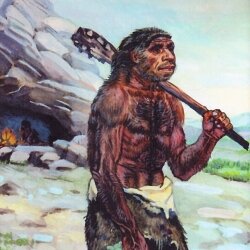
2,6 m – 800k years BC – Olduwan culture is on the territory of Kazakhstan
2,6 m – 800k years BC – Olduwan culture is on the territory of Kazakhstan
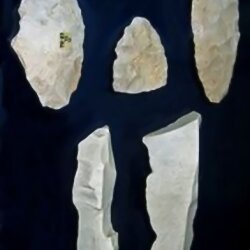
800k – 140k years BC – Acheulean culture is on the territory of Kazakhstan
800k – 140k years BC – Acheulean culture is on the territory of Kazakhstan
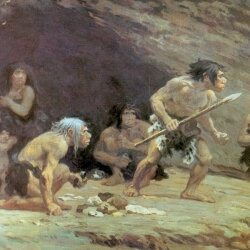
140k – 40k years BC – Mousterian culture is on the territory of Kazakhstan
140k – 40k years BC – Mousterian culture is on the territory of Kazakhstan
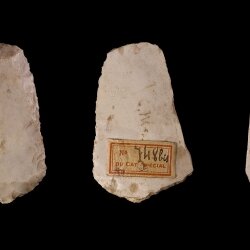
50-45k years BC – The time of modern humans’ appearance on the territory of Kazakhstan
50-45k years BC – The time of modern humans’ appearance on the territory of Kazakhstan
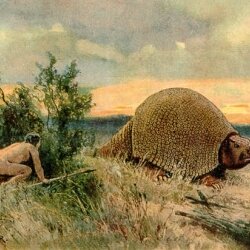
40-10k years BC – Late Paleolithic era is on the territory of Kazakhstan
40-10k years BC – Late Paleolithic era is on the territory of Kazakhstan
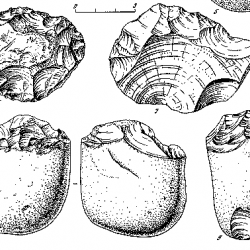
10-5k years BC – Mesolithic era is on the territory of Kazakhstan
10-5k years BC – Mesolithic era is on the territory of Kazakhstan
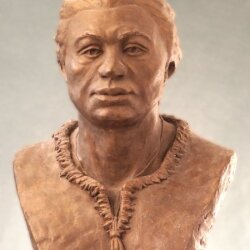
5-4k BC – Neolith is on the territory of Kazakhstan
5-4k BC – Neolith is on the territory of Kazakhstan
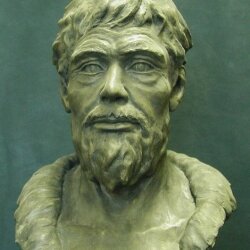
4-3k years BC – Eneolithic era (Copper Stone Age) is on the territory of Kazakhstan
4-3k years BC – Eneolithic era (Copper Stone Age) is on the territory of Kazakhstan
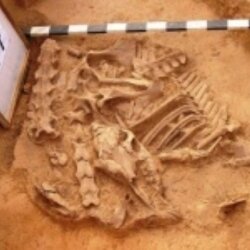
3700-3100 years BC – Botay culture
3700-3100 years BC – Botay culture
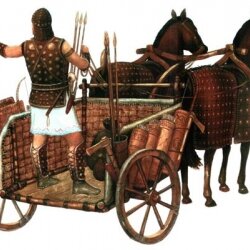
1800-900 years BC – The Bronze Age is on the territory of Kazakhstan
1800-900 years BC – The Bronze Age is on the territory of Kazakhstan
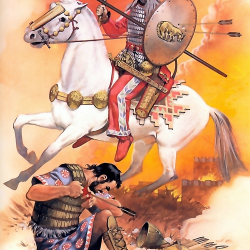
70s of 7th century – beg. of 6th century BC - domination of the Scythians (Sakas) in Asia Minor
70s of 7th century – beg. of 6th century BC - domination of the Scythians (Sakas) in Asia Minor
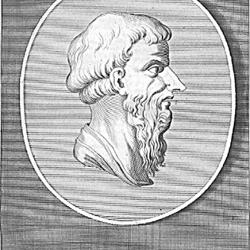
605-545 years BC - lifetime of Anacharsis, the Scythian king's son and one of the seven sages of antiquity
605-545 years BC - lifetime of Anacharsis, the Scythian king's son and one of the seven sages of antiquity
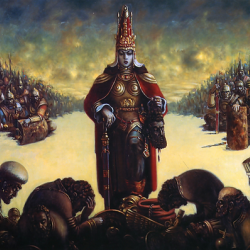
530 year BC - defeat of the Persian king Cyrus by Massaget queen Tomiris
530 year BC - defeat of the Persian king Cyrus by Massaget queen Tomiris
519 year BC - Persian king’s Darius campaign against Central Asian Saks
519 year BC - Persian king’s Darius campaign against Central Asian Saks
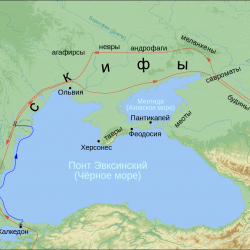
512 year BC – Persian king’s Darius campaign against Black Sea Scythians (Saka-paradraya)
512 year BC – Persian king’s Darius campaign against Black Sea Scythians (Saka-paradraya)
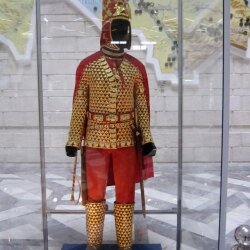
6-5 centuries BC - burial time of "Golden Man", belonging to Saks Tigrahauda ("wearing pointed hats")
6-5 centuries BC - burial time of "Golden Man", belonging to Saks Tigrahauda ("wearing pointed hats")
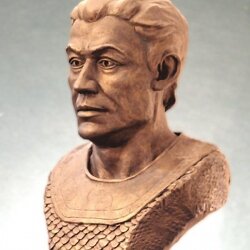
4th century BC – 4th century AD - The existence of Sarmatian tribes Union
4th century BC – 4th century AD - The existence of Sarmatian tribes Union
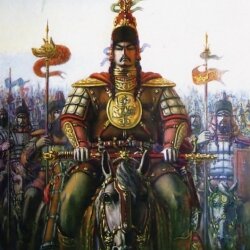
209-174 years BC - rule of Hun shanyu Modu
209-174 years BC - rule of Hun shanyu Modu

174-161 years BC - rule of Hun shanyu Laoshan
174-161 years BC - rule of Hun shanyu Laoshan
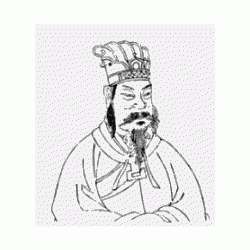
161-126 years BC – rule of Hun shanyu Tszyunchen
161-126 years BC – rule of Hun shanyu Tszyunchen
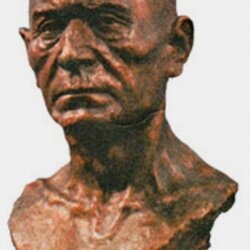
160 year BC - Resettlement of Usuns in Semirechie
160 year BC - Resettlement of Usuns in Semirechie

2nd century BC-4th century AD – State of Kanguy
2nd century BC-4th century AD – State of Kanguy
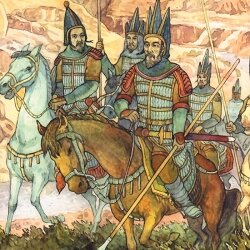
58-36 years BC – Civil war among the Huns
58-36 years BC – Civil war among the Huns.
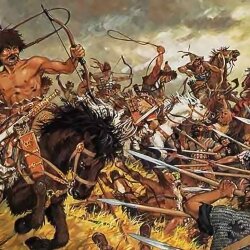
52 year BC - adoption of the southern Hunnu nationality of China
52 year BC - adoption of the southern Hunnu nationality of China.
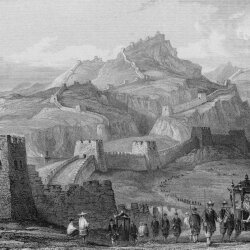
10 year AD – Huns’ restoration of independence from China
10 year AD – Huns’ restoration of independence from China
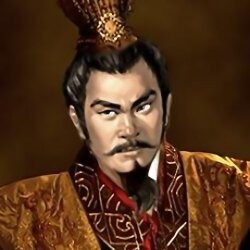
48 year AD - re-adoption of southern Huns the nationality of China.
48 year AD - re-adoption of southern Huns the nationality of China.
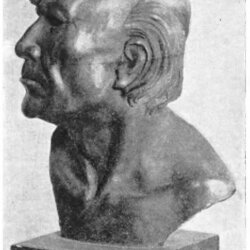
93-155 years - Retreat of the northern Huns to West in Jungaria
93-155 years - Retreat of the northern Huns to West in Jungaria

2nd century AD – 469 year – Existence of Hun’s State
Huns - a union of tribes formed in II-IV centuries in the Ural region of Turkic Huns, moved in II century from Central Asia, and local ugrov and Sarmatians, they invaded in the 70s in the IV century AD in Eastern Europe. Huns created a vast empire from the Volga to the Rhine.
160-490 years – Yueban, state of "impotent" Huns
Yueban - ancient state of Hun people (one of the branches) in the south central part of modern Kazakhstan. After continuous wars with the Chinese, from the Huns, repressed for Tarbagatai probably through Dzungarian Gate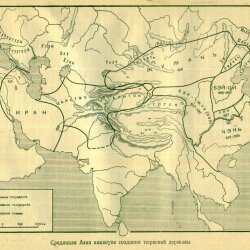
4th century AD-555 year The Existence of Rouran Khaganate
Union of Mongolian nomadic peoples. Founder of Rouran Khaganate was Yuytszyulyuy Mugulyuy. According to Chinese sources, Yuytszyulyuy Mugulyuy was a slave of unknown origin.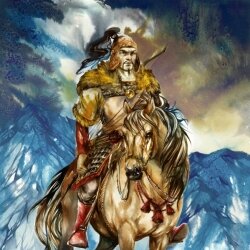
434-453 years – rule years of Hun’s Chief Attila
Attila was born in about 410’s; his father Mundzuk in 420 years fought the Burgundians on the Rhine. Attila was the leader of the Huns from 434 to 453 a year. He united under his rule the barbarian tribes from the Rhine to the Northern Black Sea.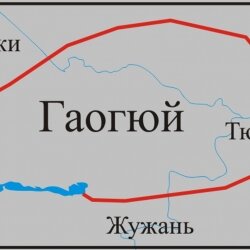
490-540 years - Gaogyuy. Ancient state in eastern Kazakhstan
Gaoguy was formed as a result of the defeat of the state Yueban in 490 and the time when telesskih tribes came to the region. The Gaogyuy structure consisted of 12 clans: Lifuli, Tula, Ichzhan, Dalian, Kuhe, Dabo, Alun, Moyun, Syfan, Fufolo, Tsiyuan, Yushupey (Yukuanpey).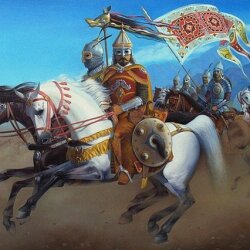
545 year – Rebellion of Tiele against Rourans.
By 545, the rule of Rourans repeled almost all subjects, among which were the Tiele tribes and ancient Turks. Tiele’s tribal leader did not want to obey Bumyn, founder of the Turkic Khanate.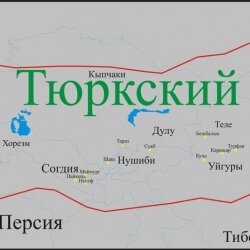
Turkic Khaganate (552-603 years)
552-603 years - Turkic Khagnate (Kektyurk - Celestial Turks) - the largest state in the early medieval Eurasia, created by the ancient Turks, led by the rulers of the genus Ashin.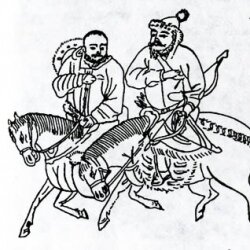
552 year – the rule of Bumyn-kagan
In 545 year Tiele tribes rebelled against Rourans again and the new Turkic state was headed by governor of Turks-Ashin Bumyn.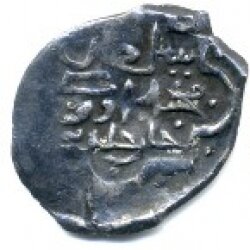
552-553 years – the rule of Kara Issyk-kagan
After the death of Bumyn Kagan his son Kara Issyk-Kagan comes to the throne. He finally defeated Rourans and strengthened the power of the Turks in the steppes.

553-572 years – the rule of Mukan-kagan
553-572 years – the rule of Mukan-kagan
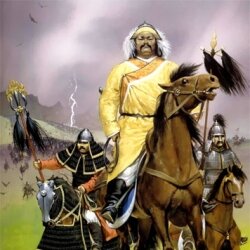
554-558 years Turks crusade to the West
On behalf of Mukan-Kagan his uncle Istemi led a large army consisting of 10 Turkish tumens, went to the west in the spring of the year 554. Usuns weakened by Rourans raids did not resist and already in 555 without encountering serious resistance along the way, yabgu reached the Aral Sea, conquered all the tribes and the states on his path.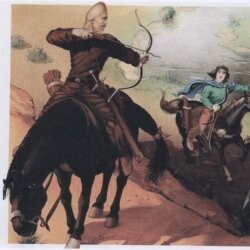
563-567 years – the War of Turks and Ephtalites
In 562 year, the armies of shakhinshakh Khosrow Anushirwan inflicted defeat to Ephtalites and took Tocharistan. After this Turks struck and conquered Chach.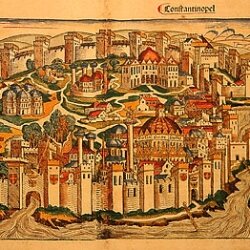
567 year – Maniah embassy to Byzantium
When dividing former possessions of Ephtalites Turks got Sughd. Sogdians - one of the main actors in Asian trade - were obliged to Turks by termination of Rourans robberies and Ethtalitian wars.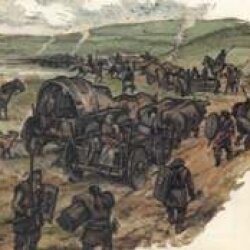
568 year – Zemarh embassy to Turkic Khaganate
Istemi took Zemarh in his summer residence in the north of the mountains Aktag, i.e. the Tien Shan, in the Valley of Yolduz River, northwest of Karashahr.
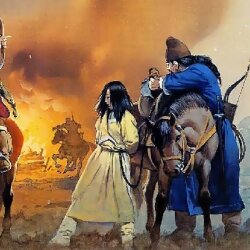
572-576 years – the rule of Taspar-kagan
Taspar was the third son of Bumyn-Kagan. He ascended the throne, put Taspar corulers ("small Kagans"): nephew Shetu (son of Kara Issyk Khan) appointed Erfu Khan, i.e. the ruler of the eastern domains, and brother Zhutan Khan - in the west, with the title Bouley Khan.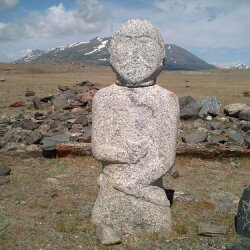
576 year – death of Istemi, brother of Bumyn and de facto ruler of the Western Turkic Khaganate
576 year – death of Istemi, brother of Bumyn and de facto ruler of the Western Turkic Khaganate
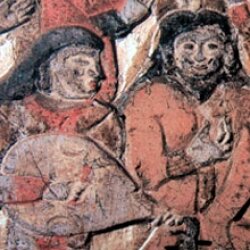
581 year – beginning of crisis in Khaganate
After the death of Taspara there was a crisis caused by the lack of a clear line of succession. Before his death, bequeathed Taspar left the throne to Toremen.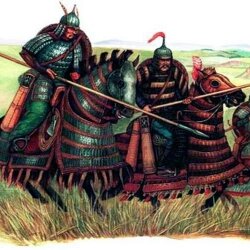
599-603 years - split and collapse of the Turkic Khaganate
West Kara-Churin Kagan and East Zhangara Kagan. In 597 the Turkic Kagan Yong-Ulugh asked for help from Kara Churin, as the Chinese have decided to make Khan Zhangara Kagan and they already lured to his side many Turks. This year Kara Churin broke the Volga tribes and troops began to move east.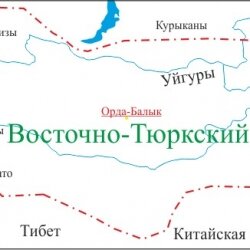
603-630 years – Eastern Turkic Khaganate
The power of Turkic state soon deteriorated. There is a weakening of the Turkic Khaganate, which became the main manifestations of civil wars strengthening, aggravation of social contradictions, the offensive on the Khaganate border by China, wars with neighboring countries. In the year 603 there was a collapse of the Turkic Khaganate on Western Turk Empire and the Eastern Turkic Khaganate.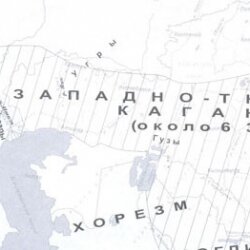
603-704 years – Western Turkic Khaganate
In the year 603 there was a collapse of the Turkic khaganate into the West and East. The boundaries of the Western Turkic Khaganate ranged from the Sea of Azov and the Don to the eastern spurs of the Tian Shan and north-eastern India.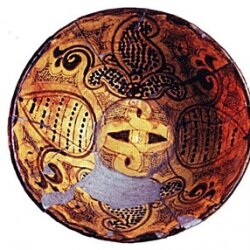
610-618 years – the rule of Western Turkic Sheguy-Kagan
Sheguy, son of Young-Souh-tegin, grandson of Kara Churin Turk was Kagan of Western Turkic Khaganate since 611-612 years till 618 year. In 598, the Kara-CHurin Turk put his grandson Sheguy to rule in Shash, in what is now Tashkent. After fleeing of Taman Kagan, he was elected as Khan of nushibi tribes. In the case of Sheguya rule there were periodic collisions with Shibir Khan Turk-Shad - Eastern Kagan.
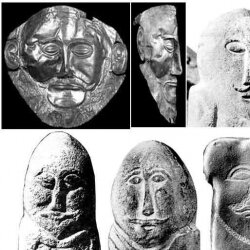
618-630 years – the rule of Eastern Turkic Tone-dzhabgu kagan
Tone Dzhabgu - son of Young-Souh-tegin, son of Kara Churin Turk. His reign is considered to be the heyday of the Western Turkic Khaganate. In 619, he conquered the tribes of Kibi and Seyanto. After that, he conquered the Eastern Turkestan, Samarkand and the boarders of his state reached the territory of present-day Pakistan.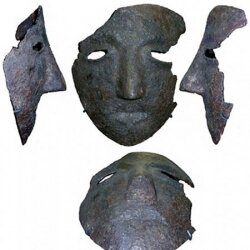
632-671 years – Bulgar Khaganate
Short-term unification of Bulgar Turkic tribes (632-671 years), which arose in the steppes of Eastern Europe soon after the unrest in Western Turkic Khaganate and weakening of Avarians. The main area was located in the Black Sea and Azov steppes. Basis of the union was Bulgar tribe Kutrigurs.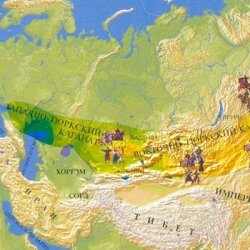
634-639, administrative reform of Yshbar Khilash-Khagan
In 634, Yshbar Khilash-Khagan came to power. At the very beginning of his reign he was forced to start the management reform in his Khaganate. He made an attempt to revive the effectiveness of the military-administrative system of “ten arrows”.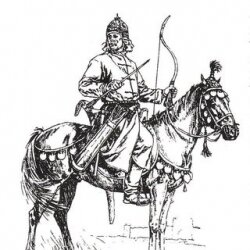
646-727, Tonyukuk, the political and military figure of the Second Turic Khaganate
According to Tonyukuk, he got an education “under the influence of Chinese culture”. During the period of the restoration of independence of the ancient Turks, he was the closest advisor and associate of Kutlug, who took the title of Ilterish Khagan. Tonyukluk was the initiator of an active an aggressive foreign policy.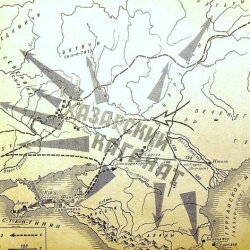
650-969- The Khazar Khaganate
The Khazar Khaganate was founded by the Khazars, led by a Prince from Ashin Family. The Khaganate controlled the territory of the Ciscaucasia, lower and middle reaches of the Volga River, modern North West Kazakhstan, the Azov Sea region, eastern part of the Crimea, and also steppes and forests of Eastern Europe up to the Dnieper River.
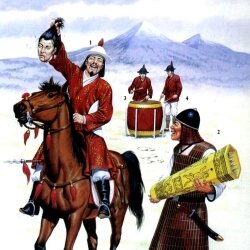
657, the Western Turkic Khaganate was captured by the Chinese troops and divided into two parts
After the death of Yshbar Khilash-Khagan, the 16-year tribal war began between groups of the Dulu and Nushibi; it weakened the Western Turkic Khaganate. Weakening of the Western Turkic Khanagate in the middle of the 7th, century led to China’s invasion to the territory of the Zhetysu. In 657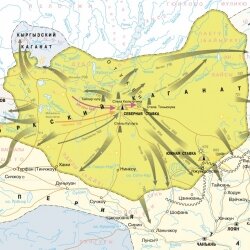
682-745, the Second Turkic Khaganate
In 679, the Turkic tribes that settled in the Empire of Tang after the ruination of the Eastern Turkic Khaganate, organized a revolt in order to recreate the Khaganate. The mutiny was raised by the Turks of the Ashide tribe and was led by Ashide Yuanczhen.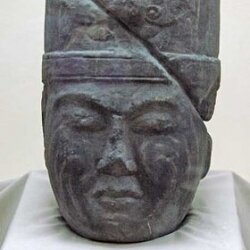
685-731, Kul-tegin
Kul-tegin was the younger brother of Bilge-Khagan. He was famous as the participant of numerous military campaigns which secured supremacy of the Turks in Central Asia.
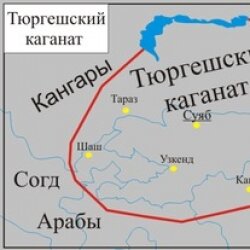
704-756, The Turgesh Khaganate
The Turgesh Khaganate was a medieval Turkic state on the territory of Kazakhstan. It ranged from Tashkent to Turfan and Beshbalyk. The state’s capital was Suyab.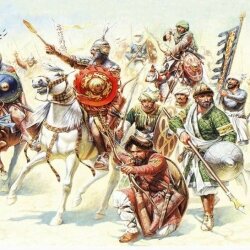
705, beginning of conquest of Central Asia by the Arabs
Arab tribes that lived in the Arabian Peninsula from the 3rd millennium BC were consolidated into a single state by Prophet Muhammad, who became the founder of a new religion – Islam.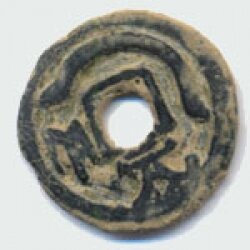
715-738, the rule of the Turgesh Suluk-Khagan
The spread of the Arab influence that started in 711 (after the defeat of the Turgeshs from the Eastern Turks) was again stopped by the Turgeshs led by Suluk, who in 715 freed Fergana of invaders.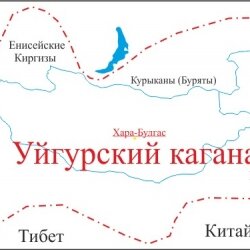
745-840, the Uyghur Khaganate
n 742, a coalition of the Basmaly, the Karluks, and the Uyghurs defeated the Turks. A clash between this coalition and the Turks lasted from 742 to 745. Also, there was a struggle within the coalition, from which the winners were the Uyghurs.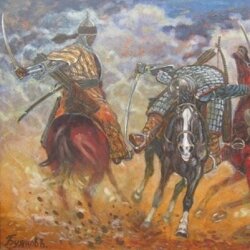
746, migration of the Karluks to the Zhetysu
In 746, after losing to the Uyghurs in the war of succession of the Second Turkic Khaganate, the Karluks moved to the Zhetysu and Jungaria.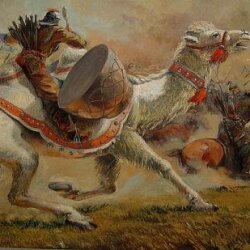
751, battle on the Talas River
During the period of relocation of the Karluks to the Zhetysu and the Tien-Shan Mountains, the situation there remained tense. The Arabs managed to complete the conquest of Sogd, crush the resistance of Samarkand, Tashkent and Otrar and by 738, to establish firm borders with the Turgeshs.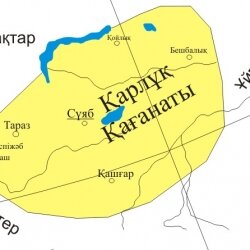
756-940, the Karluk Khaganate
The Karluk Khaganate was the Turkic state which occupied the territory from the Jungar Alatau to the middle reaches of the Syradya River, between the Balkhash and Issyk-Kul Lakes.
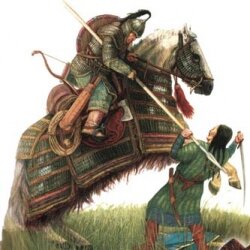
840, Defeat of the Uyghur Khaganate by the Yenisei Kyrgyzs
In 839, a nobleman Kyulyug-beg relying on the Shato people, attacked Karakoram. The Khan committed suicide and the noblemen who supported the uprising, declared a little Kesi-tegin as a Khan.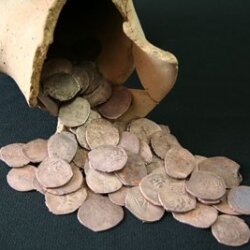
840, The Karluk rulera take the title of a Khagan
The tribes of the Chigili and Yagma, as well as on of the Turgesh tribes – Tuhsi – and the remaining Orkhon Turkic peoples entered into the Karluk tribal Union. The history of all these tribes, starting with the 9th century, is inseparable. One of the KaraKhanid legends tells that the first sovereign of a KaraKhanid.
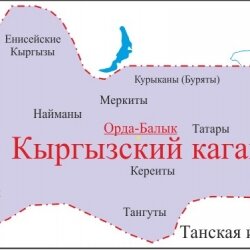
840-920, Kyrgyz Khaganate
The Kyrgyz Khaganate is an early medieval Turkic State in Central Asia and Southern Siberia led by the Yenisei Kyrgyzs. In the 6th-7th centuries the Kyrgyzs together with the Taiga people under their power, formed the peripheral area of the Central Asian states that was headed by the Governor – Elteber.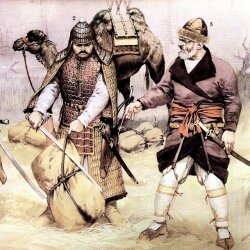
The 9th century – 1043, The Oghuz State
Originally the Oghuz roamed in the Zhetysu. Rotated off by the Karluks, the Oghuz migrated to the middle reaches of the Syrdarya River where they began fighting over land with the Kangards (Pechenegs-Bajanaks). Later they moved from the Syrdarya River to the Volga River and were scattered on the banks of Irgiz, Ural, Emba, Uiyl rivers and also in the foothills of the Alatau Mountains.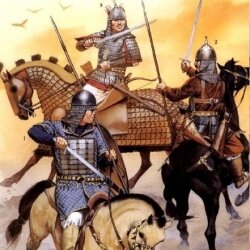
The 9th century – first half of the 11th century, State of the Kimeks
State of the Kimeks is an early medieval state on the territory of modern Kazakhstan and Southern Siberia. The state stretched from the Irtysh River in the East to the Ural Mountains in the West. The main part of population was the Kimiks who lived in the eastern lands of the Empire; the lands closer to the Ural Mountains were populated by the Kipchaks regarded as the western branch of the Kimeks.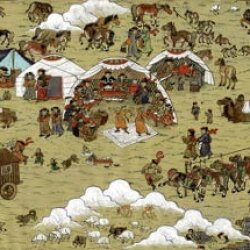
847-1036, The Uyghur State in Gansu
The history of the Gansu Uyghurs can be divided into three stages: 1) 841-862, the Uyghurs penetrated into the territory of modern Gansu province when they have been dependent on the Tibetans and even participated in the military operations of the Tibetans;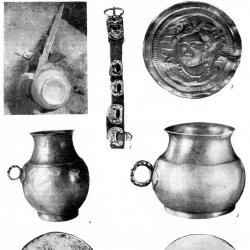
847-1368, The Turfan State of the Uyghurs
The Turfan State of the Uyghurs is a medieval Turkic State in the Northern part of the East Turkestan that was ruled by the dynasty of the Uyghur idykouts (‘a ruler’). This state was formed upon the breakup of the Uyghyr Khaganate. Pan Tekin is considered as the first idykout of Turfan.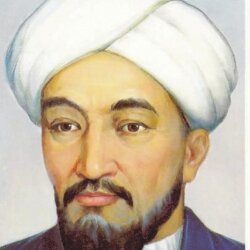
870-950, Abu Nasr al-Farabi
Al-Farbai was born in 870, in the ancient city of Otrar; the Arabs called this city Barfa or Farab that was situated on the banks of the Arys River. Hence his name is translated as Abu Nasr of Farab. The current location of the city is the territory of Shaulder area in the South Kazakhstan region.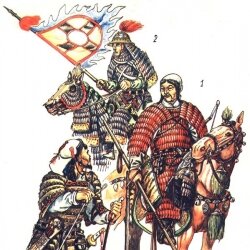
907-1125, the Lyao state of the Kidans
The Lyao state of the Kidans was the early medieval state that existed on the territory of the modern North-West China from the moment of foundation by the tribal leader Abaoczy in 907 till the uprising of the Jurchens in 1125. In 906, the Lyao state attacked the Bokhay state.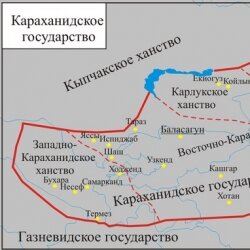
942-1212, The KaraKhanid state
The KaraKhanid state is an early medieval Turkic formation that existed on the territories of the South Kazakhstan, the East Turkestan, and Central Asia. The power in the KaraKhanid state was divided between two tribal groups that were the core of the Karluk tribal unity in the 9th century – the Chigils and the Yagma.
960, Declaration of Islam as the State religion of the Karakhanids
The most important even of the time of early Karakhanids was conversion to Islam by the dynasty and dependent tribes. In the 10th century there have been striking changes. The Arab geographer ibn Haukal reported on the adoption of Islam by thousand families of Turks, roaming in the region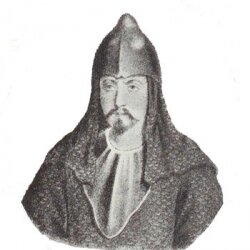
965, Military alliance of the Oghuz with the Kiev Prince Svyatoslav
The Oghuzs have played an important role in the political life of Eurasia. In the 11th century, the Oghuz started to advance to Iran and the Near East. This movement was led by the heads of the Kanyk tribe Torgul-bek and Chagry-bek who were grandchildren of Seljuq;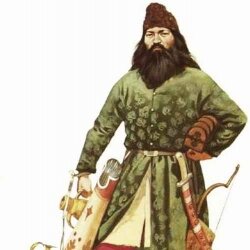
965-1036, the Pechenegs
The Pechenegs is the Russian exoethnonim of the Kangar (the Kangly) people who are named in the Arab sources as the Bajanak.
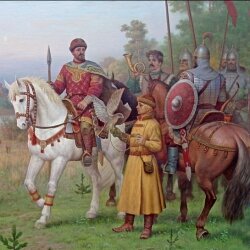
985, Campaign of the Prince Vladimir in alliance with the Oghuz to the Volga Bulgaria
In 985, in alliance with the Oghuzs, Prince Vladimir was at war with the Volga Bulgars who first took the land of Cumans, and then began the territorial expansion. In foreign policy,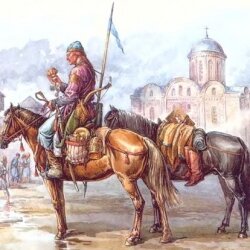
1055, emergence of Kipchaks on the borders of Kievan Rus
From the second half of the 11th century and until the beginning of the 12th century, the Western Kipchaks (Cumans) have been repeatedly attacking Southern Rus.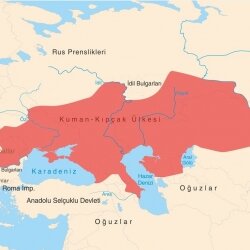
The 11th century - 1220s, Dasht-I-Kipchak
Until the mid-11th century, the Kipchaks were part of the Kimek tribal alliance. In the middle of the 11th century, they separated from the alliance and headed expansion of Turkic tribes in the territories of the Oghuzs, the Kimeks, and the Cumans. Around 1030, the Kipchaks have reached the borders of Horesm.
1091, battle of Levounion
In 1090, Pechenegs tribes (Greeks called them Skiffs) invaded the Balkan possessions of the Byzantine Empire, and by the year 1091 came to the walls of Constantinople. Byzantine’s positions were complicated by the fact that the Pechenegs were in alliance with the Seljuq fleet of Chah pirate.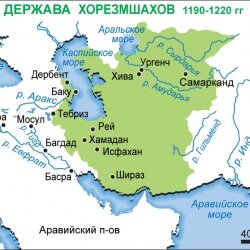
1092-1220, State of Horesmshakhs
State of Horesmshakhs situated in the lower reaches of the Amudarya River. Starting from 1092, Horesmshakhs were considering themselves as vassals to Seljuqs. In 1097, the mayor of Horesm Akinji ibn Kochkar of Turkic origin announced independence from Seljuqs and declared himself a Shah of Horesm (‘Horesmshakh’ or head of the state). The same year he was assassinated.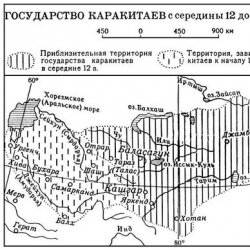
1125-1211, the Karakitai state
The Karakitai state was an early medieval state that existed in Middle and Central Asia in 1125-1218. It was founded by the Kidan Prince Elui Dashi after the fall of Lyao Empire. Th capital of the state was the city of Balasagun on the banks of the Chu River.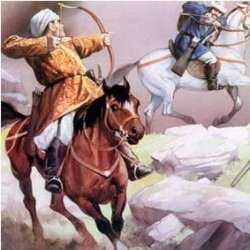
9th September 1141, battle of the Valley near Katvan
In 1141, a head of the Seljuq dynasty Sanjar started a campaign in alliance with Karakhanids against Karakitais and their allies Karluks; they met near Samarkand.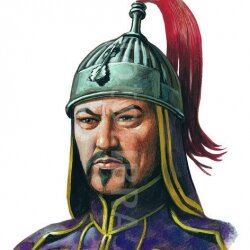
1162-1227, Genghis Khan
Temujin was born at the Deluun Boldog Mountain on the banks of the river Onon in the family of Yesugei Baghatur of the Borjigin tribe and his wife Hoelun of the Olkhonut tribe. Year of Temujin’s birth remains still unclear, since the main sources point out at various dates – 1155, 1162, and 1167 – although conventional wisdom is the year 1162.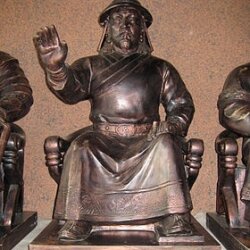
1184-1227, Jochi
Jochi was the eldest son of Genghis Khan and his first wife Borte of the Ungirat tribe (Konyrat). He was a commander who participated in the conquest of Central Asia and led a detachment in the lower reaches of Syrdarya River.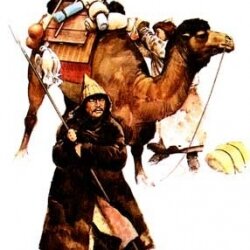
1007-1203, the Kereit state
The Kereit state was a country of the Kereits who lived in the modern territories of Transbaikalia and Mongolia in the 10-13th centuries. They had their own religion – Nestorianism.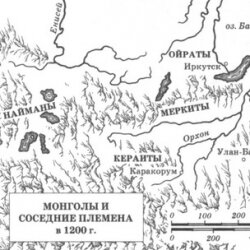
11th century-1206, the Naiman Khanate
In the 11-12th centuries, the Naiman Khanate was a major Central Asian state association. The Naimans were one of the most powerful nomadic tribes of Mongolia. Their territory extended from the rivers of Tamir and Orkhon to Irtysh River. The Naiman state occupied the lands to the West of Kereits in the modern Western Mongolia and Eastern Kazakhstan.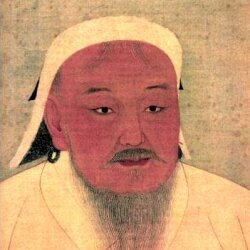
1206-1227, the rule of Genghis Khan
In the spring of 1206, at the river-head of Onon at kuriltay, Temujin was proclaimed as a Great Khan of all tribes and received the title of “Genghis Khan”. In 1207-1211, the Mongols conquered lands of forest tribes, i.e. conquered almost all of the major tribes and peoples of Siberia and the latters were forced to pay a tribute to the formers. Then Genghis Khan stepped against the Tangut Xi Xia State.
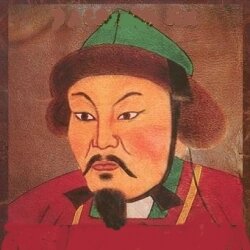
1209-1255, Batu
Batu was son of Jochi. According to the division by Genghis Khan in 1124, the eldest son of Jochi, Batu, was given the Kipchak steppes, Horesm, and also Jochi was obliged to conquer the western part of the Dasht-I-Kipchak, Caucasus, Crimea and Rus. Jochi died in 1227 owning only the Asian part of the Kipchak steppes and Horesm. Batu has been active on the political scene since 1230s.
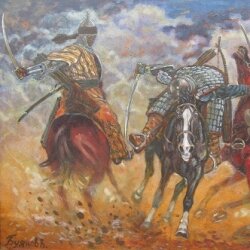
1210, defeat of the Karakitais by the Horesmshakh
In 1210, Mohammed Horesmshakh started a strong resistance relying on support of Muslim Karakitais who considered him as a liberator. In September 1210, at battle of Ilamish on the Syrdarya River, the Karakitais troops were defeated. In the Muslim world the victory of Muhammad
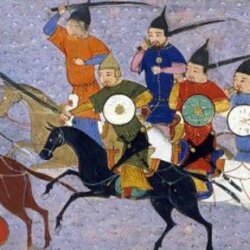
1211-1218, rule of Kuchluk in the Zhetysu
After the defeat from the Mongols, Kuchluk managed to escape to the Zhetysu to the Karakidan’s Gurkhan – Elui Czhulh. The Gurkhan received Kuchluk graciously and married his daughter to him. After defeat of Karakitais from the Horesmshakh, Kuchluk did not come to the rescue of Czhulh but instead captured his Treasury and tried to capture him. However, in the battle near Balasagun Kuchluk has been defeated.
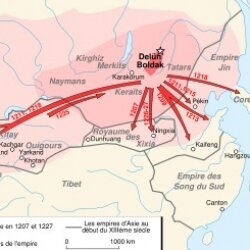
1219-1224, the conquest of Kazakhstan and Central Asia by theMongols
Genghis Khan agreed with the Horesmshakh on the good trade relations. Soon, Genghis Khan sent his first merchants to the state of Horesmshakh. Accused of spying, they were captured and killed by Inalchik Kair Khan, the Governor of Otrar, who was a cousin of Terken-hatun.
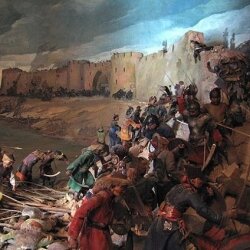
1219-1220, the siege and destruction of Otrar
The first blows of the Mongols had been inflicted on cities of Syrdarya River basin. In September of 1219, part of the Mongol army led by Chagatai, Ogodei and Subedei, laid siege of the city of Otrar – one of the major centers of Turkestan. Two months after the start of the siege the Mongols were able to cut off the source of drinking water. Soon, food stocks were exhausted in Otrar.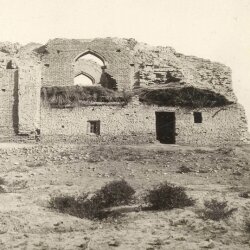
1220, the siege and capture of Syganak
Other cities of Turkestan were conquered by Jochi Khan subsequently – Syganak, Uzgend, Barchynkent, Ashnas, Jend, Yangikent, and others. Jochi’s troops, who carried out raids on the Syrdarya River, arrived to Syganak in the spring of 1220; Jochi began negotiations with the city’s residents.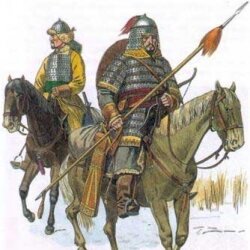
1220-1224, the Reid of Jebe and Subutai
In 1220, Genghis Khan allocated three tumens (30 thousand people) to chase after Mohammed Horesmshakh; after the death of the latter, he organized a campaign against states of the Caucasus and the Kipchaks. At the beginning of the campaign to the Caucasus, there were 2 tumens (20 thousand people) led by Subutai and Jebe.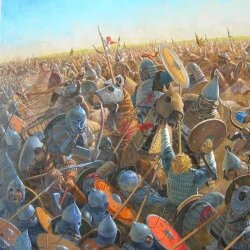
1223, battle on the Kalka River
At the beginning of 1223, the Prince Congress was convened in Kiev; it decided that the forces of Kiev, Galich, Chernigov, Seversk, Smolensk, and Volyn principalities should support the Kipchaks and Kotyan-Khan against the troops of Jebe and Subutai.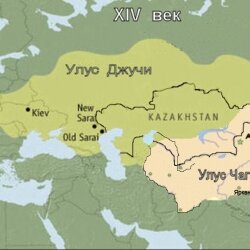
1124-1503, the Ulus of Jochi
History of creation of the Ulus of Jochi began in 1207. According to the “Innermost legend”, in this year Jochi led a campaign for which he got the conquered lands. According to the medieval Mongolian hereditary right, eldest sons were getting the most distant possessions during the lifetime of their father, while the younger children were getting lands of “indigenous yurt”. Jochi conquered the most remote lands.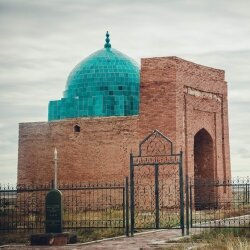
1227, Jochi’s death
In the last years of his life, Jochi had a very strained relationship with his father. The reason for this was not performing orders of Genghis Khan. Father ordered him to conquer territory in the West at the time when Jochi did nothing.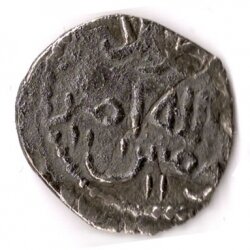
1227-1250s, a joint ruling of Batu and Orda-Edjen in the Ulus of Jochi
After the death of Jochi, his two sons Batu and Orda-Edjen were called to Khagan where they were appointed as co-rulers of their father’s territory. This joint ruling continued until the deal of Orda-Edjen. Although after the Western campaign of Mongos Orda-Edjen had much less of subservient territories and armies.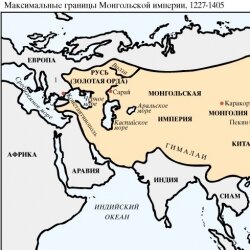
1227-1229, the Regency of Tolui, son of Genghis Khan
Tolui was the fourth son of Genghis Khan and Borte. After the death of Genghis Khan, Tolui inherited the native lands of his father and got in control all armies of the latter until a khuriltai would select a Khan of the Mongol Empire to whom Tolui would be obliged to pass on all troops.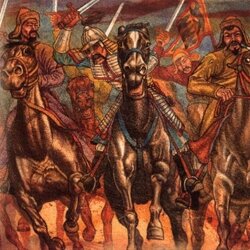
1229-1241, the rule of Ogodei
Ogodei was the third son of Genghis Khan and Borte. He continued father’s aggressive expansion of the territories. Just upon taking the throne, Ogodei sent two detachments of thirty thousand troops each to Iran and Nothern Caspian territories to conquer the peoples living there.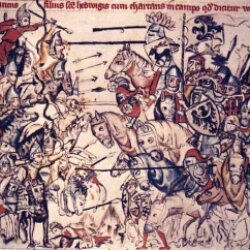
1236-1242, the Western Campaign of the Mongols
In 1235, on a khuriltai Ogodei initiated the Western Campaign for conquering the Kipchaks and their allies. The following groups took part in the campaign: children of Jochi – Batu, Orda-Edjen, Shiban, and Berke; Chagatai’s son Baidar and Chagatai’s grandson Buri; Ogodei’s children Guyuk and Kadan; children of Tolui Mengu and Buchek and also the youngest son of Genghis Khan Kulkan; generals Subutai and Burundai.
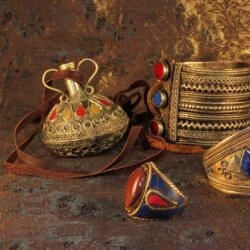
1241-1246, the Regency of Torakina, Ogodei’s widow
Tarakina was the second wife of Ogedei and mother of Guyuk. She was a regent in the period between reigns of Ogodei and Guyuk. Tarakina was a granddaughter of the Merkit chieftain – Genghis Khan’s enemy.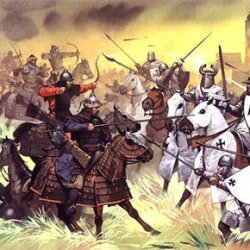
11th April of 1241, the battle on the Shayo River
The battle on the Shayo River was between King Bela and Croatian Duke of Koloman on one side and the Mongolian troops led by Batu, Shiban, Kadan, and Subutai on the other side. Army of Hungarians had twice as many troops than the Mongol’s army.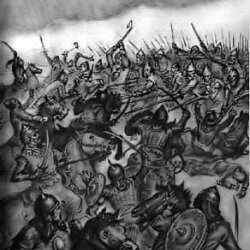
1246-1248, the rule of Gayuk, son of Ogodei
Gayuk was elected as a Khagan in autumn of 1246. He cancelled all orders of his mother’s Regency times; he also executed Torakin’s henchmen Abd ar-Rahman and Fatima.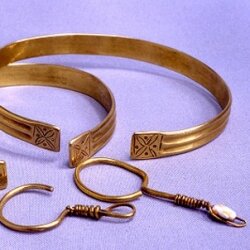
1248-1251, the Regency of Ogul-Gaimysh, Gayuk’s widow
Ogul-Gaimush was the wife of Gayuk and came from the Merkit tribe. After the death of Gayuk in April 1248, Ogul-Gaimysh ordered to deliver a coffin with his body to the Emil River where his headquarters were located.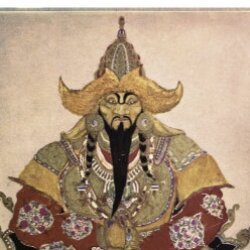
1251-1259, the rule of Mengu, Tolui’s son
At the beginning of 1251, descendants of Tolui backed by Joshi’s descendants organized a khuriltai in Karakorum; it was intended to proclaim Mengu as a Great Khan. Batu sent his brother Berke with the army in order to support Mengu. In addition, Mengu’s mother, Sorhahtani, has managed to attract Belgutei
1255-1256, the rule of Sartak in the Golden Orda
Sartak was son of Batu. He secretly professed Christianity. After the death of Batu in 1255, Sartak was appointed by Mengu as a ruler of the Ulus of Jochi. However, on the way home he was poisoned.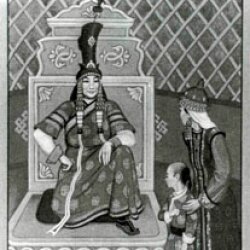
1256-1259, the rule of Ulagchi in the Golden Orda
Ulagchi was appointed by Mengu-Khagan as the ruler of the Ulus of Jochi. He was accompanied by Batu’s widow Borakchin as the Regent. In 1257.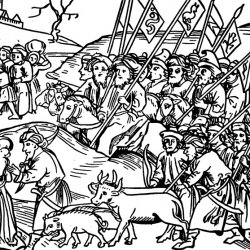
1258, Burundai’s campaign against Poland and Lithuania
In 1256-1257, Burundai of the Kiyat tribe was appointed to replace Kuremsy on the western frontiers of the Ulus of Jochi. In 1258, the Lithuanians harried the principality of Smolensk and came to Torzhok without encountering resistance from Alexander Nevsky who was at that time in the Orda together with other Princes of North East Rus. Burundai told to Daniil about the campaign against Lithuania and ordered to join him.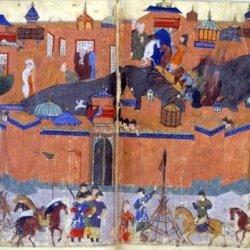
1258, capture of Baghdad by the Mongols; collapse of the Abbasid dynasty
Prior to the siege of Baghdad, Hulagi conquered the Iranian Ismails-Nizarits (known as “assassins”) by taking the impregnable Alamut castle without a fight in 1256. Then, in 1257, Hulagu wended to Baghdad. Mengu ordered Hulagu to spare the Caliphate if it would reign to the Mongols.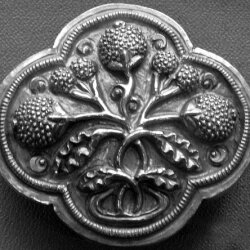
1259-1262, absence of a ruler in the Golden Orda
In 1259, the Golden Orda actually came to the anarchy. This was due to the subsequent deaths of Ulagchi and Mengu. Hence, the political crises began in the Ulus of Jochi. A Khagan could not appoint the ruler of the Orda due to the fact that a Khagan himself had not been elected yet.
1260-1269, civil wars in the Mongol Empire
The disintegration of the Mongol Empire started in 1260. Starting from that year, the Mongol Empire has been torn apart by internecine wars. After the death of Mengu, a fight for supreme power between his brothers Kublai and Ariq Boke started.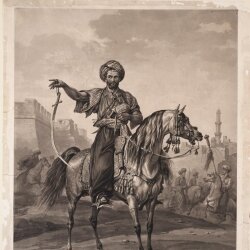
1260, the battle at the Ain-Julat against the Egyptian Mamluks; defeat of Kit-Buqa-Noion
After the death of Mengu, Hulagu withdrew most of his forces to Iran, while a 10-thousand corps of the Mongols, under the leadership of Kit-Buqa, invaded Syria and captured Damascus.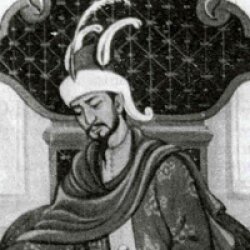
1262-1266, the rule of Berke
Since the year of 1262, Berke was the ruler of the Ulus of Jochi; he was the son of Jochi and Sultan-hatun who was the daughter of Muhammad Horesmshakh. Since his childhood, Berke was brought up by his mother in the spirit of the Muslim religion.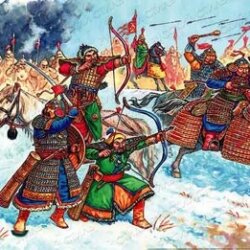
1263, the battle on the Terek River
Due to the anarchy and lawlessness in the Ulus of Jochi, it was unclear who would be the ruler of the Ulus of Jochi after Ulagchi’s death. Borakchin, the former Regent during Ulagchi’s reign, sought to retain power by the enthronement of her grandson Tuda-Mengu; however Tuda-Mengu’s uncles (children and brothers of Batu) have not agreed to it. Borakchin fearing so much opposition has offered Hulagu to the throne of the Ulus of Jochi.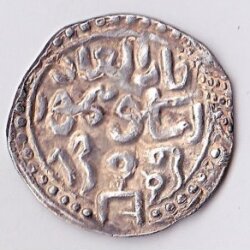
1266-1282, the rule of Mengu-Timur
After Berke, in 1266, Mengu-Timur came to power; he was the son of Tukan and the grandson of Batu. Mengu-Timur was a rightful heir of childless Berke. At the beginning of his reign, Mengu –Timur fought with rebels. Upon enthronement, Mengu-Timur granted the Ulus of Shiban to the latter’s son Bahadur; Crimea was given to Uran-Timur, son of Tuka-Timur.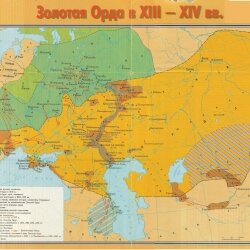
1269, the formal independence of the Goldan Orda from the Mongol Empire
1269, the formal independence of the Goldan Orda from the Mongol Empire
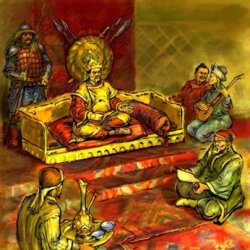
1282-1287, the Rule of Tuda-Mengu
1282-1287, the Rule of Tuda-Mengu.
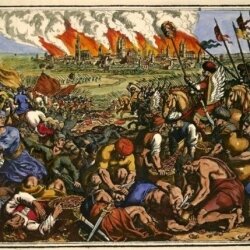
1287-1291, the rule of Tula-Buga
1287-1291, the rule of Tula-Buga
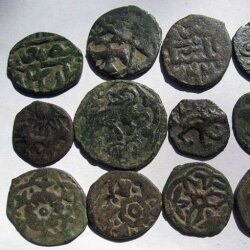
1291-1312, the rule of Tokhty
1291-1312, the rule of Tokhty.
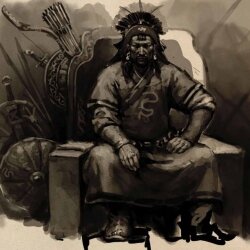
1313-1341, the rule of Uzbek-Khan
1313-1341, the rule of Uzbek-Khan

1341-1342 the rule of Tanybek
1341-1342 the rule of Tanybek

1341-1342, the rule of Janibek
1341-1342, the rule of Janibek
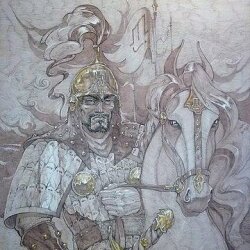
1342-1356, life of Yedige
1342-1356, life of Yedige
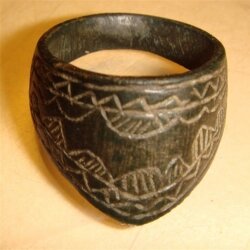
1357-1359, the rule of Berdibek
1357-1359, the rule of Berdibek
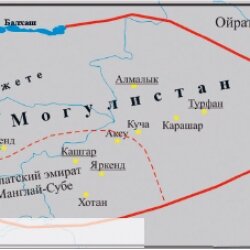
1347, formation of Moghulistan
1347, formation of Moghulistan
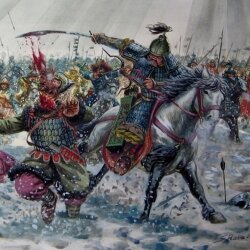
1359-1380 –Velikaya amyatnya
1359-1380 –Velikaya amyatnya
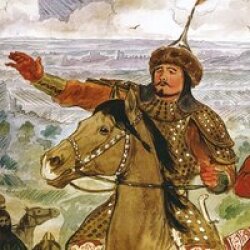
1368-1377 – Urus-khan’s reign
1368-1377 – Urus-khan’s reign
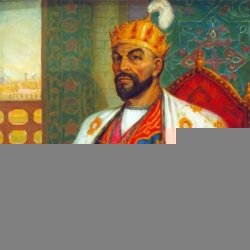
1370-1405 – Tamerlan’s reign
1370-1405 – Tamerlan’s reign
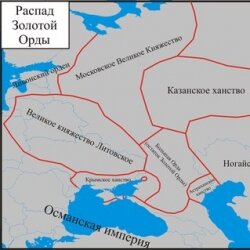
1377 –Toktakiya’s reign
1377 –Toktakiya’s reign
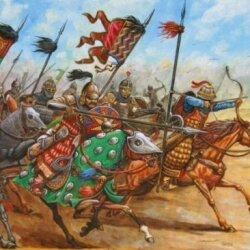
1377-1379 – Timur-malik’s reign
1377-1379 – Timur-malik’s reign
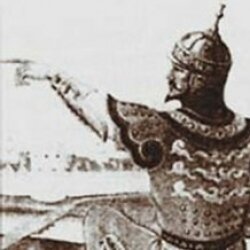
1380-1406 – Tohtamysh’s reign
1380-1406 – Tohtamysh’s reign
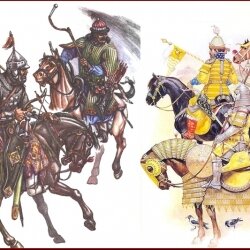
1391 –Battle at the Kondurcha river
1391 –Battle at the Kondurcha river
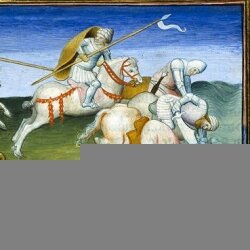
1395 –Battle at the Terek
1395 –Battle at the Terek
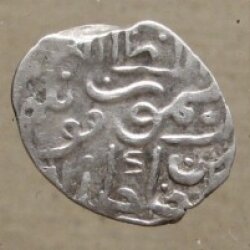
1391-1399 –Timur-Kutluk’s reign
1391-1399 –Timur-Kutluk’s reign

1397-1398 –Building of the Hodzha Ahmed Yassaui mausoleum
1397-1398 –Building of the Hodzha Ahmed Yassaui mausoleum
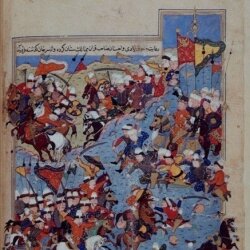
1399 – Battle at the Vorskla
1399 – Battle at the Vorskla
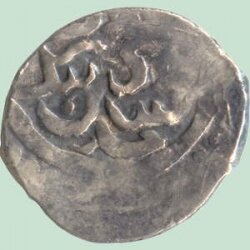
1399-1407 –Shadibek’s reign
1399-1407 –Shadibek’s reign

1407-1411 –Pulad’s reign
1407-1411 –Pulad’s reign
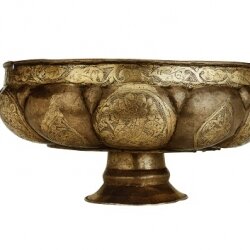
1411-1412 –Timur-khan’s reign
1411-1412 –Timur-khan’s reign
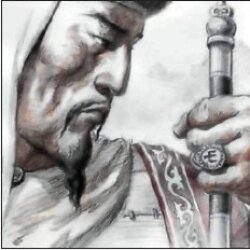
1422-1429 – Barak’s reign
1422-1429 – Barak’s reign
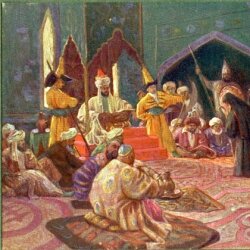
1424-1445 –Ulug Muhammed’s reign
1424-1445 –Ulug Muhammed’s reign
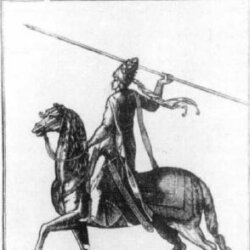
1429-1449 –Kuchuk-Muhammed’s reign
1429-1449 –Kuchuk-Muhammed’s reign
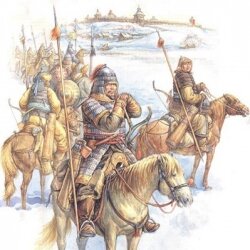
1430-1469/70 –Abulhair’s reign
1430-1469/70 –Abulhair’s reign
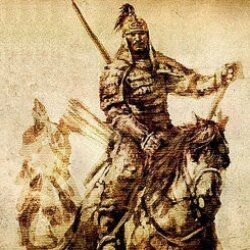
1457 –Battle between Abulhair and Oirats
1457 –Battle between Abulhair and Oirats
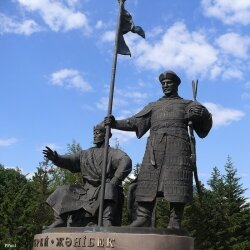
1465-1466 –Establishment of Kazakh khanate
1465-1466 –Establishment of Kazakh khanate
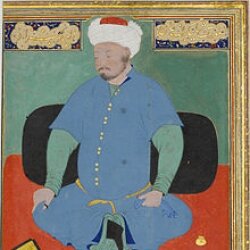
1509-1510 –Muhammed Shaibani’s marches to Kazakhs
1509-1510 –Muhammed Shaibani’s marches to Kazakhs

1511-1521 –Kasym’s reign
1511-1521 –Kasym’s reign
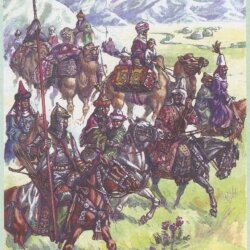
1521-1522 –Mamash’s reign
1521-1522 –Mamash’s reign
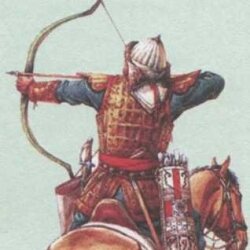
1522-1532 –Tahir’s reign
1522-1532 –Tahir’s reign

1532-1551 –Civil wars in Kazakh khanate
1532-1551 –Civil wars in Kazakh khanate
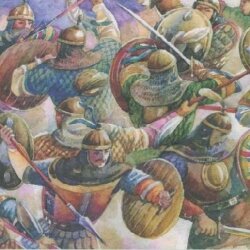
1551-1580 –Hak-Nazar’s reign
1551-1580 –Hak-Nazar’s reign
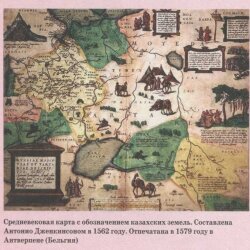
1580-1582 –Shigay’s reign
1580-1582 –Shigay’s reign
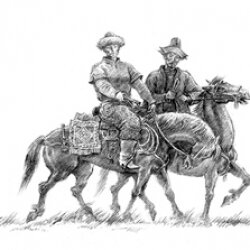
1582-1598 –Taukel’s reign
1582-1598 –Taukel’s reign
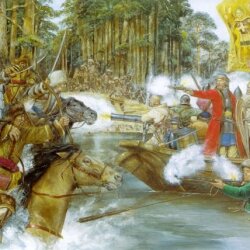
1598 –Joining of Siberian khanate to Russia
1598 –Joining of Siberian khanate to Russia
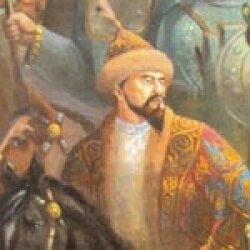
1598-1628 –Yesim’s reign
1598-1628 –Yesim’s reign

1611-1627 –Tursun-Muhammed’s reign
1611-1627 –Tursun-Muhammed’s reign
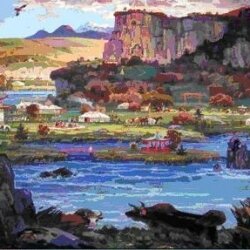
1635 –Establishment od Dzungar khanate
1635 –Establishment od Dzungar khanate
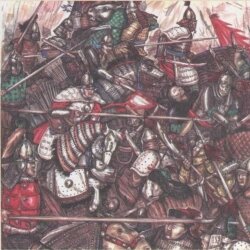
1643 –Battle at the Orbulak
1643 –Battle at the Orbulak
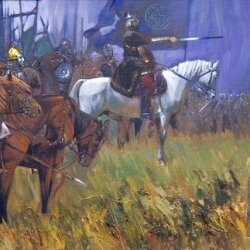
1643-1652 –Zhangir’s reign
1643-1652 –Zhangir’s reign
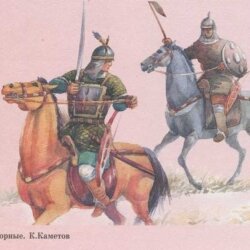
1652-1680 –Batyr’s reign
1652-1680 –Batyr’s reign
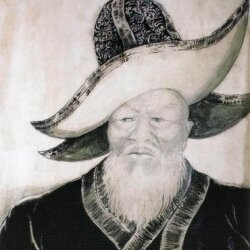
1680-1715 –Tauke’s reign
1680-1715 –Tauke’s reign
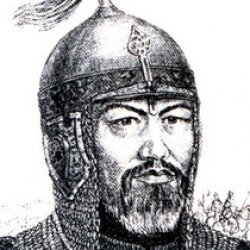
1710 –Kurultay (meeting of all representatives of three zhuzes) in Karakums
1710 –Kurultay (meeting of all representatives of three zhuzes) in Karakums
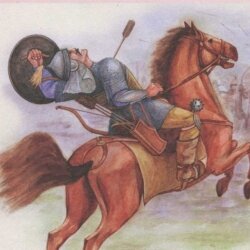
1715-1718 –Kaip’s reign
1715-1718 –Kaip’s reign
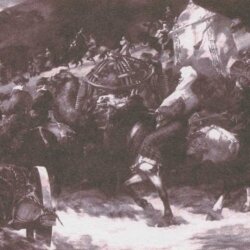
1718-1723 –Bolat’s reign
1718-1723 –Bolat’s reign
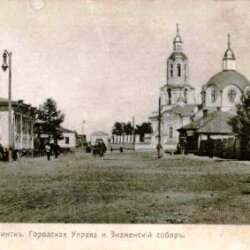
1718 –Foundation of Semipalatinsk
1718 –Foundation of Semipalatinsk
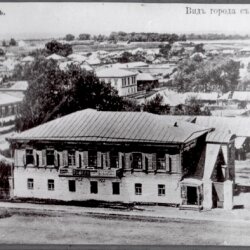
1720 –Foundation of Ust-Kamenogorsk
1720 –Foundation of Ust-Kamenogorsk
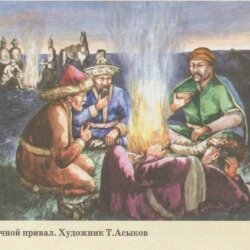
1720-1740 –Zholbarys’s reign
1720-1740 –Zholbarys’s reign
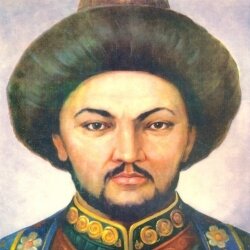
1723-1748 –Abulhair’s reign
1723-1748 –Abulhair’s reign
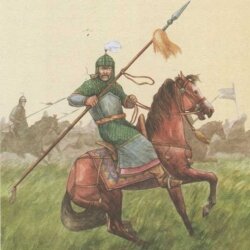
1723-1734 –Samekes’ reign
1723-1734 –Samekes’ reign
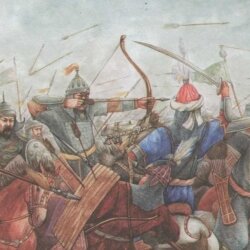
1726 –Battle at Bulanty
1726 –Battle at Bulanty
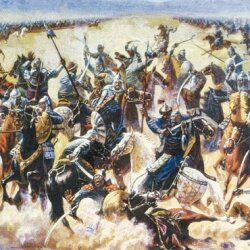
1730 – Battle at the Anyrakay
1730 – Battle at the Anyrakay
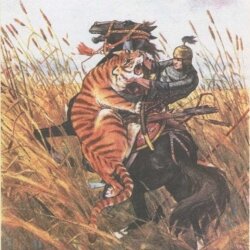
1738-1771 –Abulmambet’s reign
1738-1771 –Abulmambet’s reign
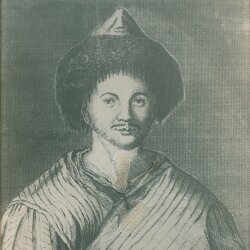
1731 –Establishment of Russian protectorate
1731 –Establishment of Russian protectorate
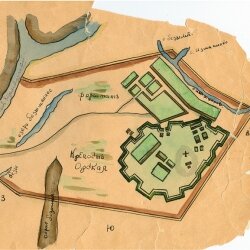
1735 –Foundation of Orsk. (called Orenburg)
1735 –Foundation of Orsk. (called Orenburg)
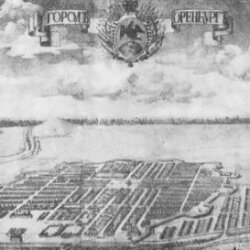
1743 –Foundation of Orenburg
1743 –Foundation of Orenburg
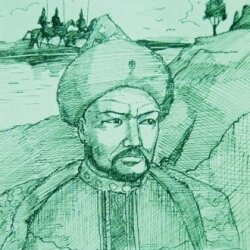
1748-1786 – Nuraly’s reign
1748-1786 – Nuraly’s reign
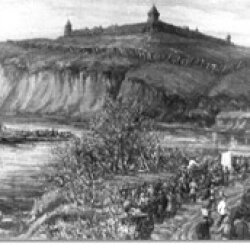
1752 –Foundation of Petropavlovsk
1752 –Foundation of Petropavlovsk
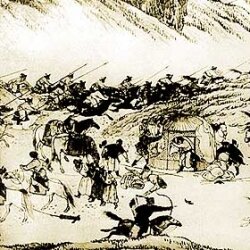
1758 –Crushing of Dzungar khanate
1758 –Crushing of Dzungar khanate
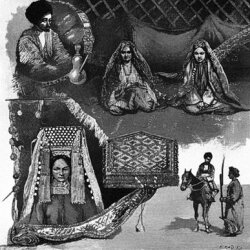
1770-1805 –Pirala’s reign
1770-1805 –Pirala’s reign
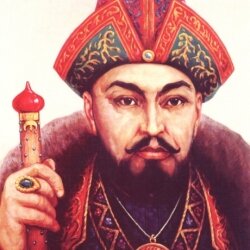
1771-1780 –Ablai’s reign
1771-1780 –Ablai’s reign
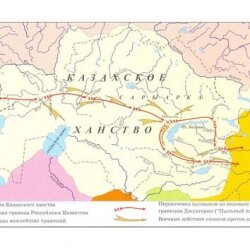
1771 – «Dusty march»
1771 – «Dusty march»
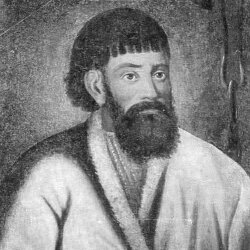
1773-1775 – Kazakhs’s participation in Yemelian Pugachev’s uprising
1773-1775 – Kazakhs’s participation in Yemelian Pugachev’s uprising
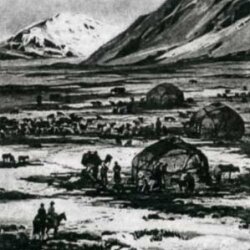
1781-1821 –Vali’s reign
1781-1821 –Vali’s reign
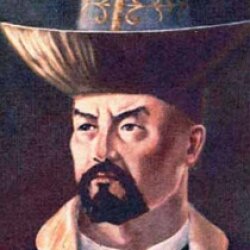
1783-1797 –Revolt under the command of Syrym Datov
1783-1797 –Revolt under the command of Syrym Datov
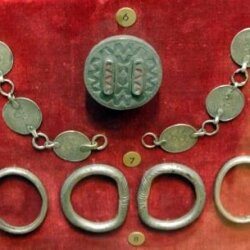
1784-1799 –Hanhondzhi’s reign
1784-1799 –Hanhondzhi’s reign
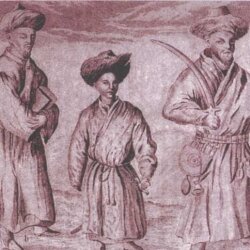
1791-1794 –Yeraly’s reign
1791-1794 –Yeraly’s reign
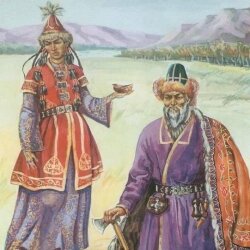
1795-1797 гг. – Yesim’s reign
1795-1797 гг. – Yesim’s reign
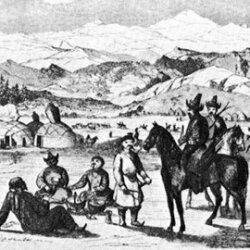
1797-1805 гг. –Aishuak’s reign
1797-1805 гг. –Aishuak’s reign
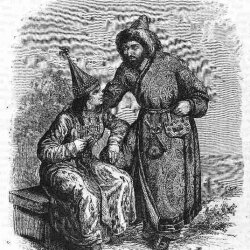
1801 - Foundation of Bukei Horde
1801 - Foundation of Bukei Horde
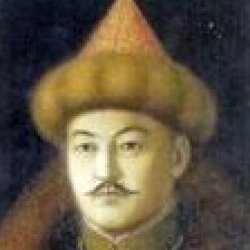
1801-1815 –the reign of Bukei, Nuraly’s son
1801-1815 –the reign of Bukei, Nuraly’s son
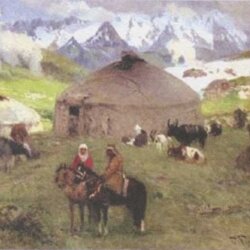
1805-1809 – Zhantore’s reign
1805-1809 – Zhantore’s reign
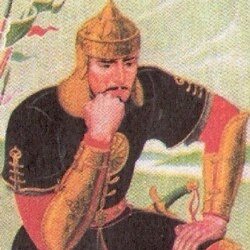
1806-1824 –Karatai’s reign
1806-1824 –Karatai’s reign
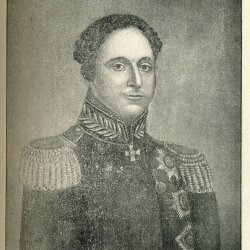
1812-1824 –Aishuak’s son, Sergazy’s reign
1812-1824 –Aishuak’s son, Sergazy’s reign
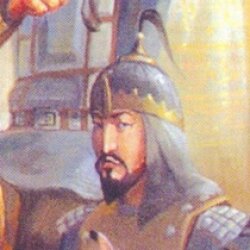
1816-1821 –Aryngazy’s reign
1816-1821 –Aryngazy’s reign
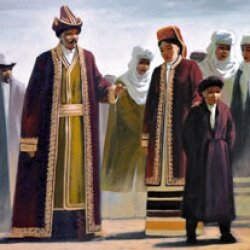
1815-1824 –Shigai’s reign
1815-1824 –Shigai’s reign
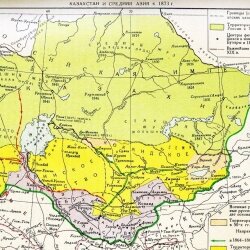
1816-1819 –Barak’s son, Bukey’s reign
1816-1819 –Barak’s son, Bukey’s reign
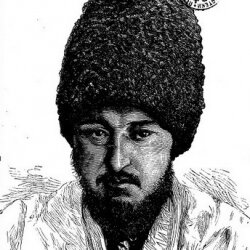
1817-1819 –Kaip’s son, Sergazy’s reign
1817-1819 –Kaip’s son, Sergazy’s reign
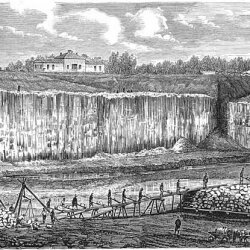
1822-1825 – Zholaman Tlenshiyev’s Rebellion
1822-1825 – Zholaman Tlenshiyev’s Rebellion
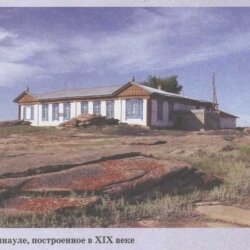
1822-1824 – Gubaidulla’s rule
1822-1824 – Gubaidulla’s rule
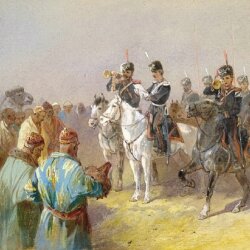
1822 – adoption of the “Decree about Siberian Kyrgyz” and abolishment of khan’s regime in Middle zhuz
1822 – adoption of the “Decree about Siberian Kyrgyz” and abolishment of khan’s regime in Middle zhuz
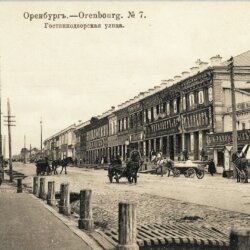
1824 – adoption of “Decree about the Orenburg Kyrgyz” and abolishment of khan’s regime in Middle zhuz
1824 – adoption of “Decree about the Orenburg Kyrgyz” and abolishment of khan’s regime in Middle zhuz

1824-1836 – Sarzhan Kasymov’s Rebellion
1824-1836 – Sarzhan Kasymov’s Rebellion
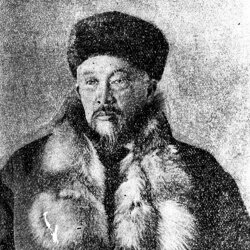
1824-1845 - Zhangyr’s rule
1824-1845 - Zhangyr’s rule
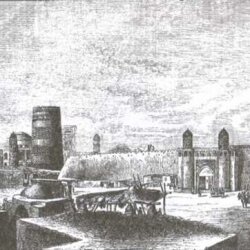
1830-1850 – Kaipgaly’s rule
1830-1850 – Kaipgaly’s rule.
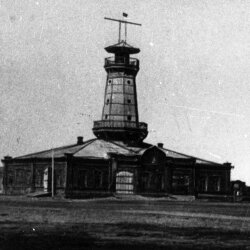
1830 - establishment of Akmolinsk (Astana)
1830 - establishment of Akmolinsk (Astana)
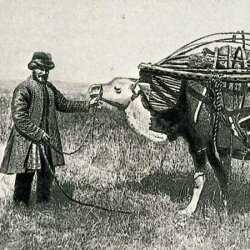
1832-1871 – the years of rule of Mukhammed-Salih Babadzhanov
1832-1871 – the years of rule of Mukhammed-Salih Babadzhanov
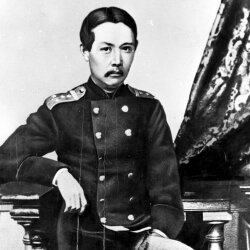
1835-1865 - Shokhan Valikhanov
1835-1865 - Shokhan Valikhanov

1836 - 1838 - Isatay Taimnov and Makhambet Utemisov’s Revolt
1836 - 1838 - Isatay Taimnov and Makhambet Utemisov’s Revolt
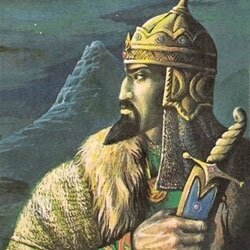
1837 - 1847 – Kanesary Kasymov’s Revolt
1837 - 1847 – Kanesary Kasymov’s Revolt
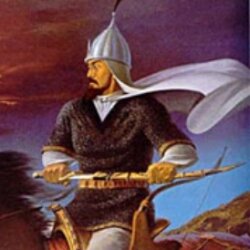
1841, influential Biys, sultans of three Kazakh zhuzes elected Kenesary Kasymov as their Khan
1841, influential Biys, sultans of three Kazakh zhuzes elected Kenesary Kasymov as their Khan
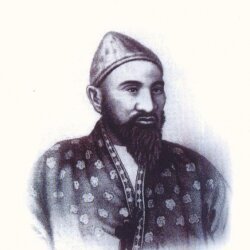
1837-1910 – Syzdyk Kenesaryuli
1837-1910 – Syzdyk Kenesaryuli.
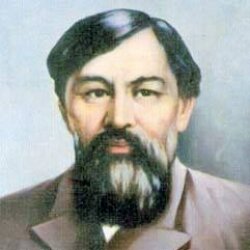
1841-1889 – Ibragim (Ibray) Altynsarin
1841-1889 – Ibragim (Ibray) Altynsarin
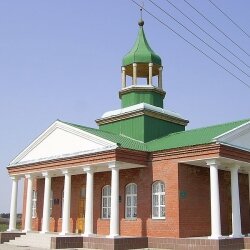
1845 – abolition of khan’s regime in Bukey Orda
1845 – abolition of khan’s regime in Bukey Orda
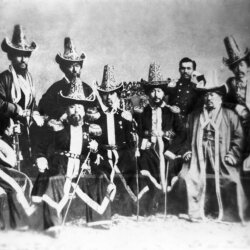
1845-1852 – Elekey’s rule
1845-1852 – Elekey’s rule
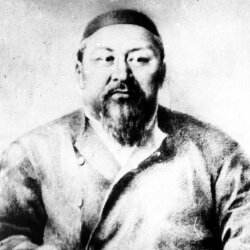
1845-1904 – Ibragim (Abay) Kunanbayev
1845-1904 – Ibragim (Abay) Kunanbayev
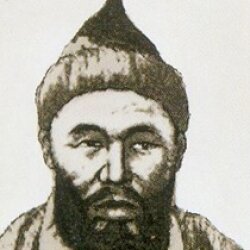
1847-1858 – Eset Kotybarov’s revolt
1847-1858 – Eset Kotybarov’s revolt.
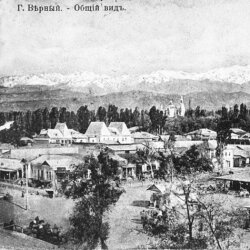
1854 y. – Establishment of Vernyi fortification (Almaty)
1854 y. – Establishment of Vernyi fortification (Almaty)
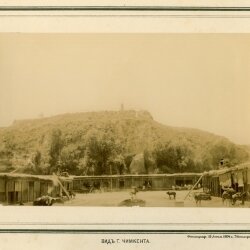
1864 – Russian invasion of Merke, Turkestan, Aulie-ata and Shymkent
1864 – Russian invasion of Merke, Turkestan, Aulie-ata and Shymkent
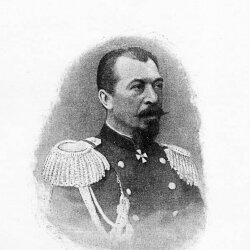
1865 – Taking of Tashkent by Russian forces
1865 – Taking of Tashkent by Russian forces
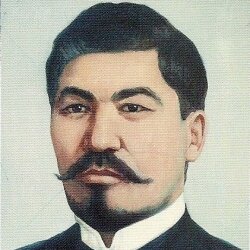
1866-1937 – Alikhan Bukeikhanov
1866-1937 – Alikhan Bukeikhanov
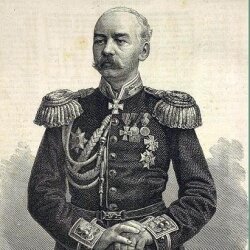
1867 – establishment of Turkestani Governorate General
1867 – establishment of Turkestani Governorate General.

1868 – establishment of Stepnoy Governorate General
1868 – establishment of Stepnoy Governorate General
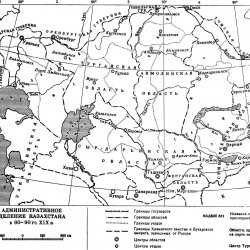
1868, November 21 – Issue of “Provisional regulation”
1868, November 21 – Issue of “Provisional regulation”
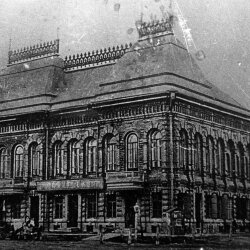
1869-1870 – revolt in Turgay and Ural regions
1869-1870 – revolt in Turgay and Ural regions.
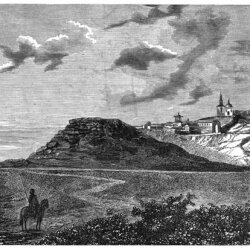
1870 – Aday revolt
1870 – Aday revolt
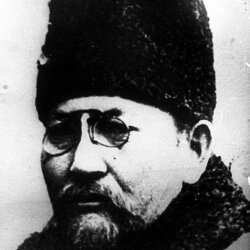
1873-1938 – Akhmet Baitursynov
1873-1938 – Akhmet Baitursynov
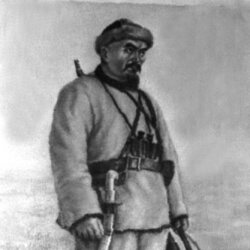
1873-1919 – Amangeldy Imanov
1873-1919 – Amangeldy Imanov

1876-1941 – F.I Goloshekin
1876-1941 – F.I Goloshekin
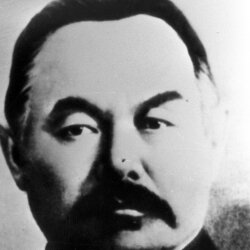
1879-1937 – Mukhamedzhan Tynyshpayev
1879-1937 – Mukhamedzhan Tynyshpayev.
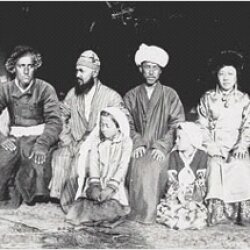
1881-1884 – emigration of Uighurs and Dungans to Semirechie
1881-1884 – emigration of Uighurs and Dungans to Semirechie.
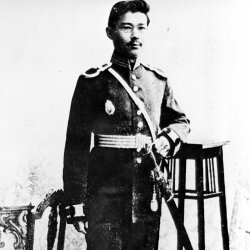
1883-1939 – Khalel Dosmukhammedov
1883-1939 – Khalel Dosmukhammedov
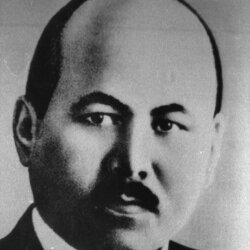
1890-1941 – Mustafa Shokhay
1890-1941 – Mustafa Shokhay
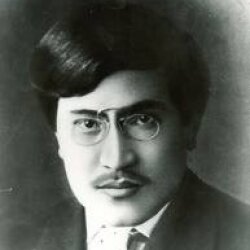
1891-1970 – Alimkan Ermekov
1891-1970 – Alimkan Ermekov.
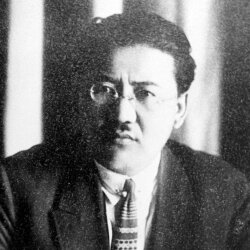
1894-1938 – Turar Ryskulov
1894-1938 – Turar Ryskulov
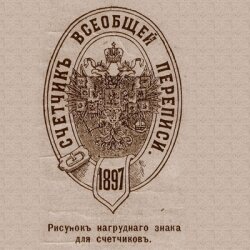
1897 – the first population census in Russion Empire
1897 – the first population census in Russion Empire
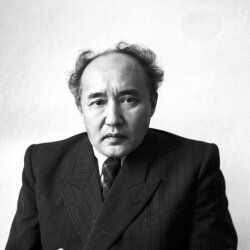
1897-1961 – Mukhtar Auezov
1897-1961 – Mukhtar Auezov.
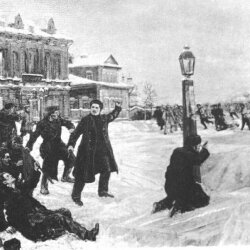
1905 – Revolution in the Russian Empire
1905 – Revolution in the Russian Empire

1905 – completion of Orenburg-Tashkent railway construction
1905 – completion of Orenburg-Tashkent railway construction
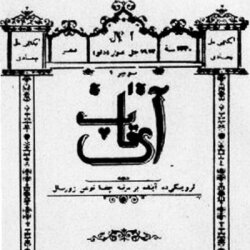
1911-1915 – “Aikap” magazine
1911-1915 – “Aikap” magazine
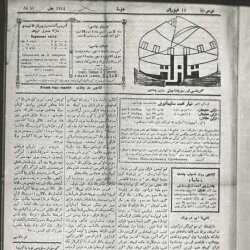
1913-1918 – “Kazakh” newspaper
1913-1918 – “Kazakh” newspaper
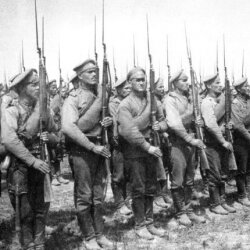
1914-1918 – World War I
1914-1918 – World War I
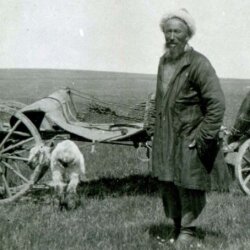
1916, June – the national-liberation movement in Kazakhstan
1916, June – the national-liberation movement in Kazakhstan
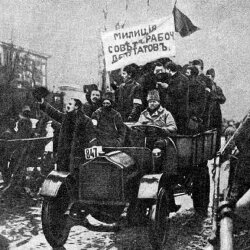
1917, February – February Revolution
1917, February – February Revolution
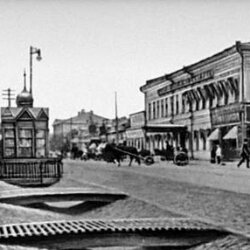
1917, July – the first all-kazakh congress
1917, July – the first all-kazakh congress

1917 October 25– October Revolution
1917 October 25– October Revolution
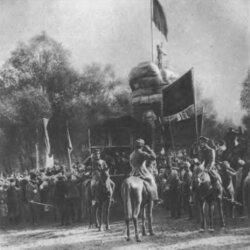
1917, November 27– Declaration of Turkestan autonomy
1917, November 27– Declaration of Turkestan autonomy

1917 December 5-12 – Declaration of “Alash” autonomy
1917 December 5-12 – Declaration of “Alash” autonomy
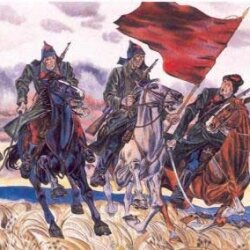
1918-1920 – Civil War in Kazakhstan
1918-1920 – Civil War in Kazakhstan.
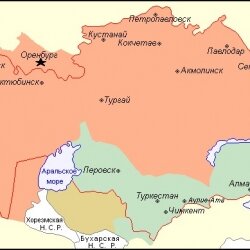
1920, August 26 – Establishment of the Autonomous Kyrgyz (Kazakh) Socialist Soviet Republic
1920, August 26 – Establishment of the Autonomous Kyrgyz (Kazakh) Socialist Soviet Republic

1921-1922 – widespread hunger in North and North-west regions of Kazakhstan
1921-1922 – widespread hunger in North and North-west regions of Kazakhstan

1925 – transformation of the capital from Orenburg to Kyzyl-orda
1925 – transformation of the capital from Orenburg to Kyzyl-orda.
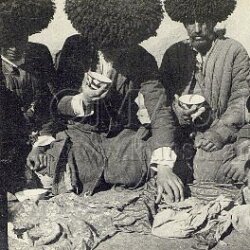
1925 – establishment of the Kara-Kalpak autonomous region in KazASSR
1925 – establishment of the Kara-Kalpak autonomous region in KazASSR
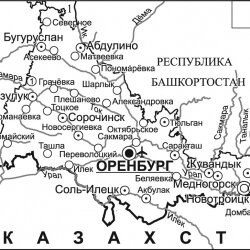
1925 April 6– withdrawal of Orenburg province from KazASSR
1925 April 6– withdrawal of Orenburg province from KazASSR
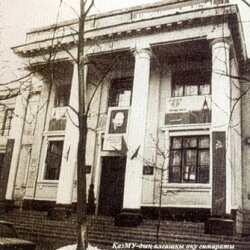
1928 – Opening of the first higher education institution in Kazakhstan.
1928 – Opening of the first higher education institution in Kazakhstan.
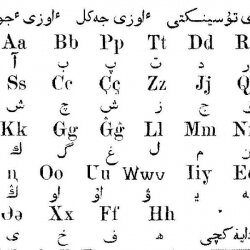
1928 December 20– transformation of the Kazakh alphabet from Arabic script to Latin
1928 December 20– transformation of the Kazakh alphabet from Arabic script to Latin
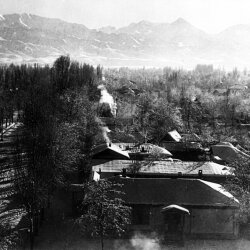
1929 – transformation of the capital from Kyzyl-Orda to Almaty
1929 – transformation of the capital from Kyzyl-Orda to Almaty
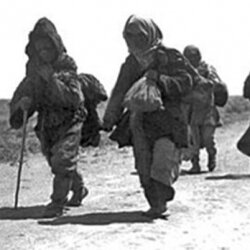
1931-1933 – Widespread hunger in Kazakhstan.
1931-1933 – Widespread hunger in Kazakhstan.
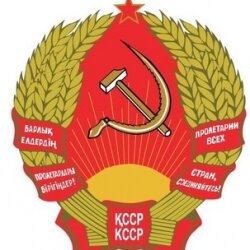
1936 December 5 – Reformation of KazASSR in the Soviet Republic
1936 December 5 – Reformation of KazASSR in the Soviet Republic
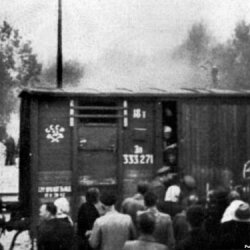
1937 – deportation of the Koreans in Kazakhstan
1937 – deportation of the Koreans in Kazakhstan
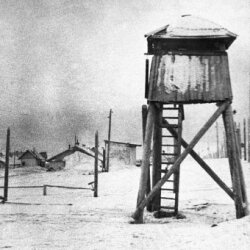
1937-1938 – mass political repressions in Kazakhstan
1937-1938 – mass political repressions in Kazakhstan
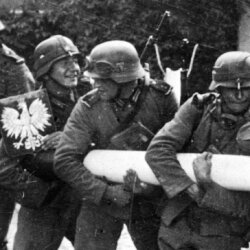
1939 September 1– The beginning of the World War II
1939 September 1– The beginning of the World War II
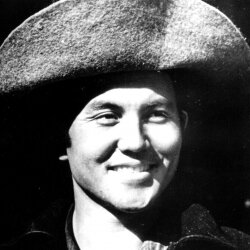
1940 July 6 – Nursultan Abishevich Nazarbayev was born
1940 July 6 – Nursultan Abishevich Nazarbayev was born.
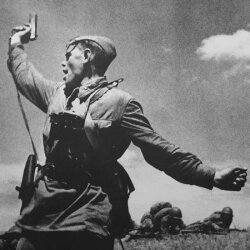
1941 June 22– German attack on USSR
1941 June 22– German attack on USSR
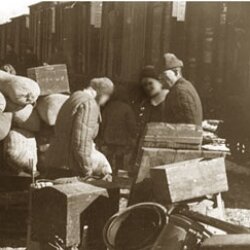
1941 – Deportation of Germans to Kazakhstan
1941 – Deportation of Germans to Kazakhstan
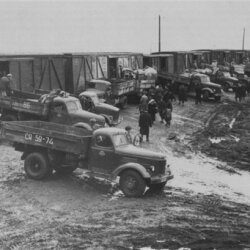
1943-1944 – deportation of Balkars, Chechens, Ingush, Karachays to Kazakhstan
1943-1944 – deportation of Balkars, Chechens, Ingush, Karachays to Kazakhstan
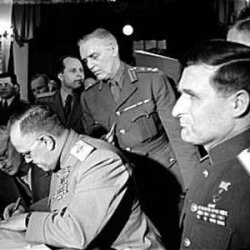
1945 May 8-9 – capitulation of Germany
1945 May 8-9 – capitulation of Germany
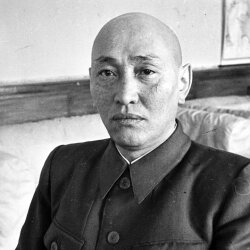
1946-1954 - Zhumabay Shayakhmetov – the leader of Kazakhstan
1946-1954 - Zhumabay Shayakhmetov – the leader of Kazakhstan
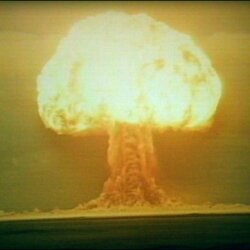
1949-199 – Semipalatinsk Nuclear Range
1949-1991 – Semipalatinsk Nuclear Range
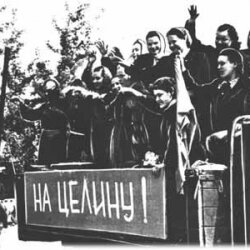
1954-1960 – Development of virgin lands in Kazakhstan
1954-1960 – Development of virgin lands in Kazakhstan
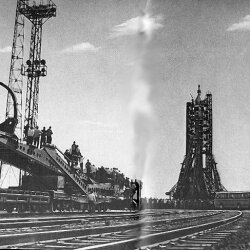
1955 – the beginning of construction of Baikonur launch site
1955 – the beginning of construction of Baikonur launch site
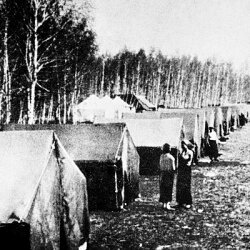
1959 August – rioting of young workers in Temirtau
1959 August – rioting of young workers in Temirtau
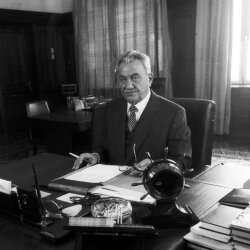
1960-1962, 1964-1986 – Kunayev Dinmukhammed Akhmedovich – the leader of Kazakhstan
1960-1962, 1964-1986 – Kunayev Dinmukhammed Akhmedovich – the leader of Kazakhstan

1979 June – protestation in Tselinograd (Astana) against establishment of German autonomy
1979 June – protestation in Tselinograd (Astana) against establishment of German autonomy
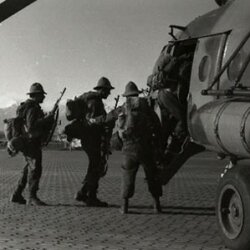
1979-1989 - War in Afghanistan
1979-1989 - War in Afghanistan
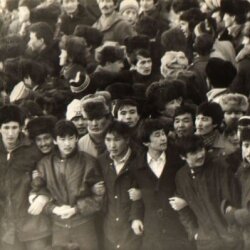
1986 December 17-18 – December events, Zheltoksan
1986 December 17-18 – December events, Zheltoksan
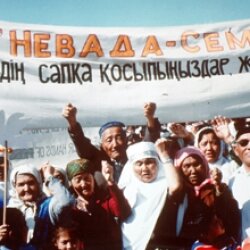
1989 - formation of “Nevada-Semipalatinsk” movement
1989 - formation of “Nevada-Semipalatinsk” movement
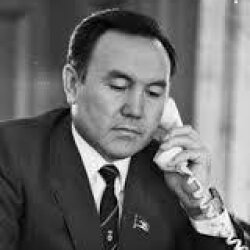
1989 June - N.A. Nazarbayev – the leader of Kazakhstan
1989 June - N.A. Nazarbayev – the leader of Kazakhstan

1991 August 29 – closure of the Semipalatinsk Nuclear Range
1991 August 29 – closure of the Semipalatinsk Nuclear Range

1991 October 2 – Journey of the first Kazakhstani cosmonaut Tohtar Aubakirov
1991 October 2 – Journey of the first Kazakhstani cosmonaut Tohtar Aubakirov
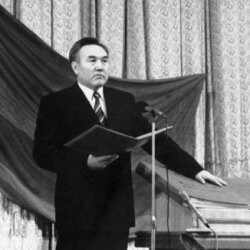
1991 December 1– first elections of KazSSR president
1991 December 1– first elections of KazSSR president.
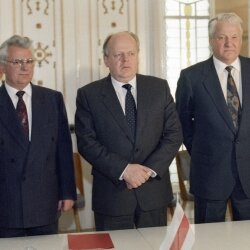
1991 December 8– Belovezhsk agreement, collapse of the USSR
1991 December 8– Belovezhsk agreement, collapse of the USSR
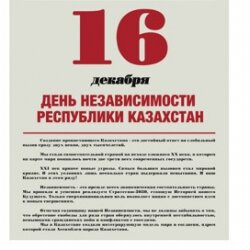
1991 December16 – adoption of the law about state independence
1991 December16 – adoption of the law about state independence
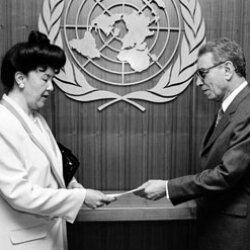
1992 March 2 – Kazakhstan’s entrance in the OON
1992 March 2 – Kazakhstan’s entrance in the OON
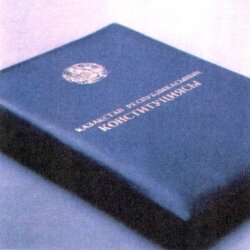
1993 January 28 – adoption of the first Constitution of RK
1993 January 28 – adoption of the first Constitution of RK
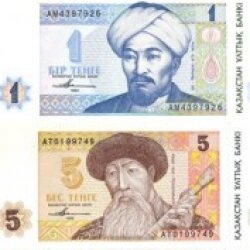
1993 November 15 – introduction of the national banknote – tenge
1993 November 15 – introduction of the national banknote – tenge

1994 March 7 – Parliamentary elections in Kazakhstan
1994 March 7 – Parliamentary elections in Kazakhstan
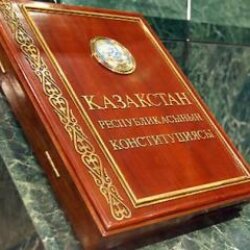
1995 August 30 – adoption of the new Constitution of RK
1995 August 30 – adoption of the new Constitution of RK
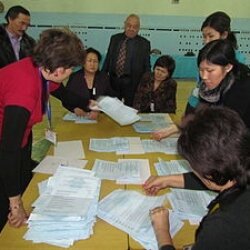
1995 December 9 – elections to the Majilis of RK
1995 December 9 – elections to the Majilis of RK
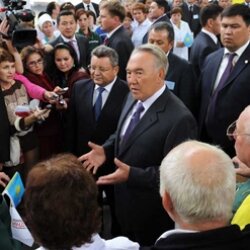
1995 April 29 – Kazakhstan referendum on the extension of N.A.Nazarbayev’s government
1995 April 29 – Kazakhstan referendum on the extension of N.A.Nazarbayev’s government.
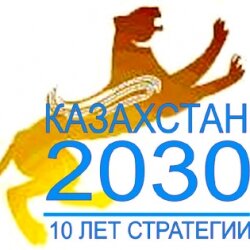
1997 – Manifestation of the program “Kazakhstan - 2030”
1997 – Manifestation of the program “Kazakhstan - 2030”
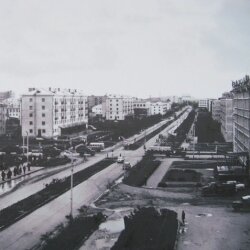
1997 December – transformation of the capital from Almaty to Akmola (Astana)
1997 December – transformation of the capital from Almaty to Akmola (Astana).
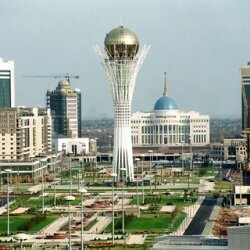
December 10 of 1997 President of Kazakhstan made the final decision on the transformation of the capital.
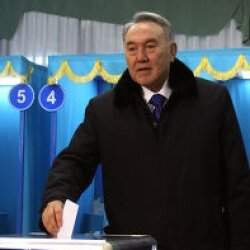
1999 January 10 – election of President of the RK
1999 January 10 – election of President of the RK

1999 – formation of the party Otan (Nur Otan)
1999 – formation of the party Otan (Nur Otan)

1999 October 10 – elections to the Majilis of RK
1999 October 10 – elections to the Majilis of RK
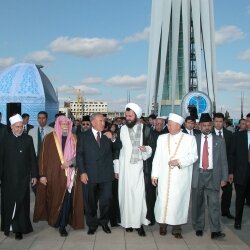
2003 September 23-24 – The first congress of leaders of world and traditional religions
2003 September 23-24 – The first congress of leaders of world and traditional religions
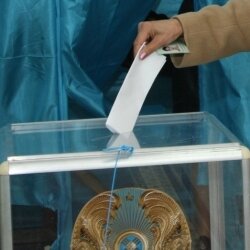
2004 September 19 – elections to the Majilis of RK
2004 September 19 – elections to the Majilis of RK

2005 December 4 –elections of president of the RK
2005 December 4 –elections of president of the RK

2007 August 18-20 – elections to the Majilis of RK
2007 August 18-20 – elections to the Majilis of RK
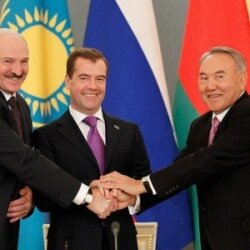
2010 January 1 – the Customs Union of Russia, Kazakhstan and Belarus began working
2010 January 1 – the Customs Union of Russia, Kazakhstan and Belarus began working
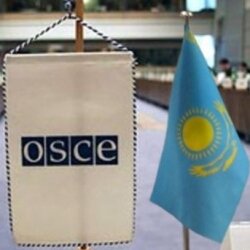
2010 – Chairmanship of Kazakhstan in the OSCE
2010 – Chairmanship of Kazakhstan in the OSCE
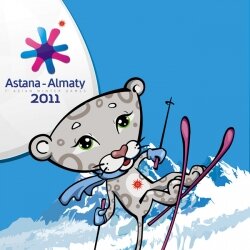
2011 - Asian Winter games
2011 - Asian Winter games
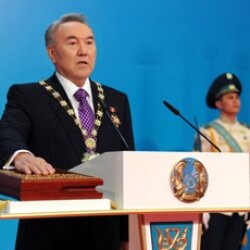
2011 April 3 – elections of president of the RK
2011 April 3 – elections of president of the RK
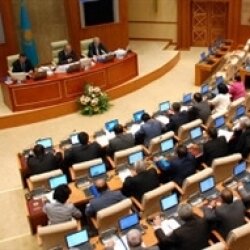
2012 January 15-16 – elections to the Majilis of RK
2012 January 15-16 – elections to the Majilis of RK